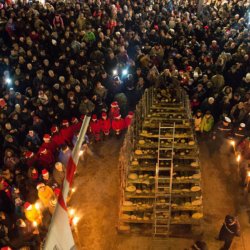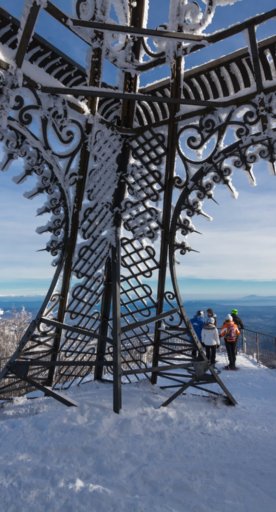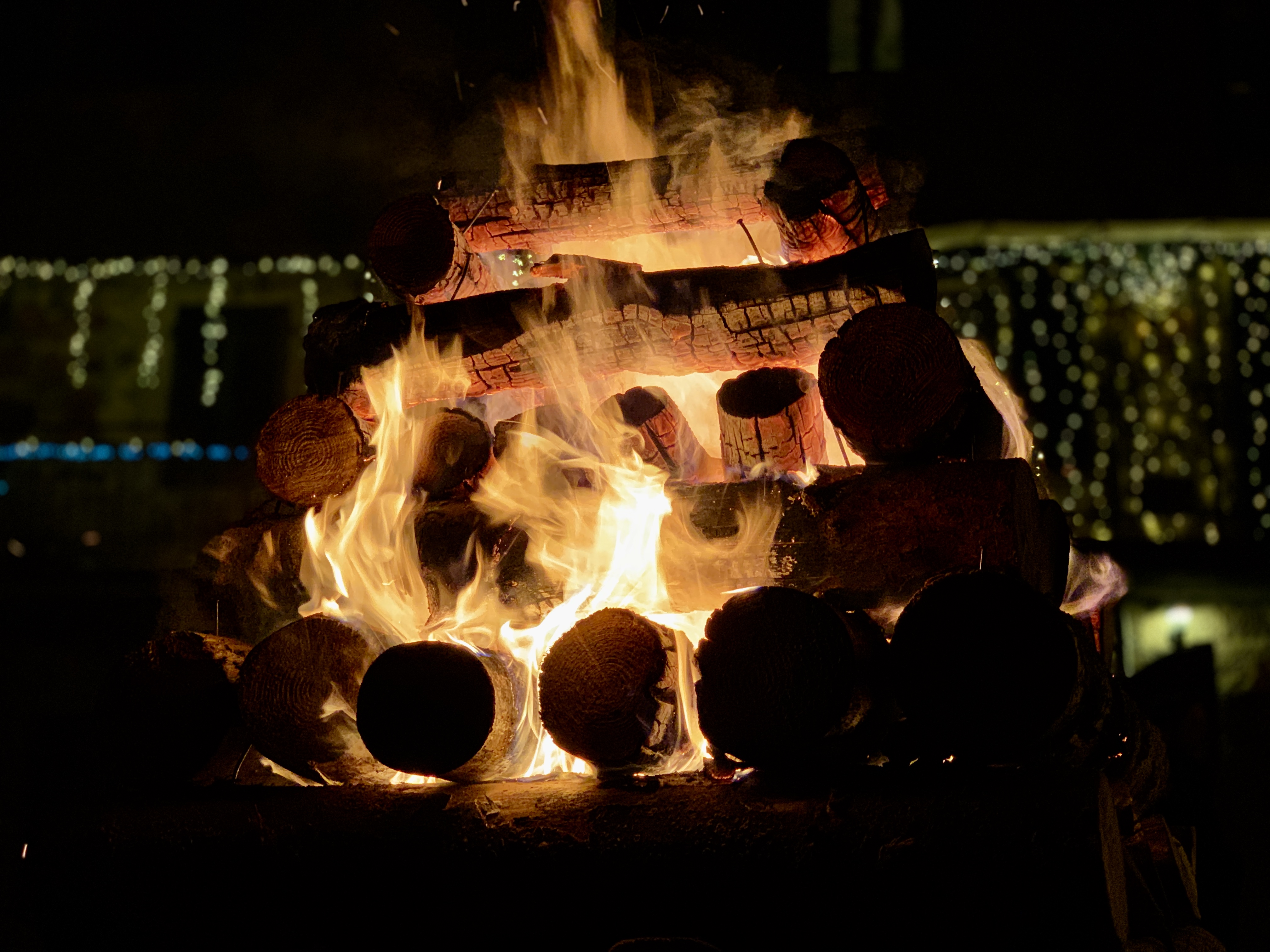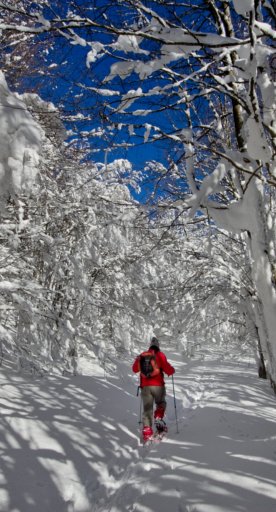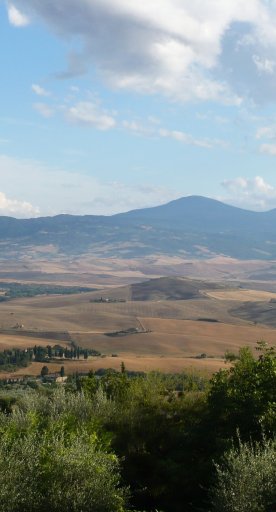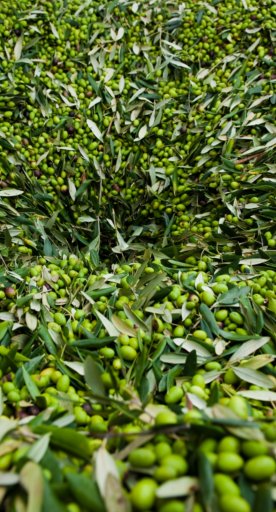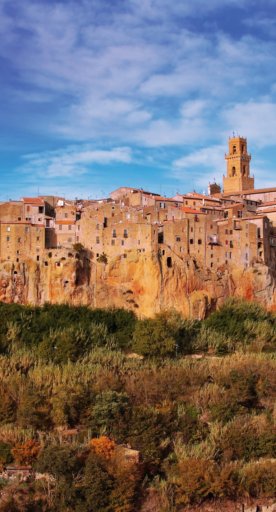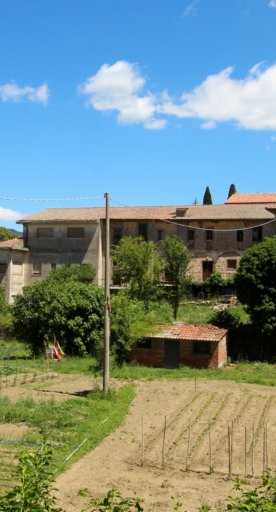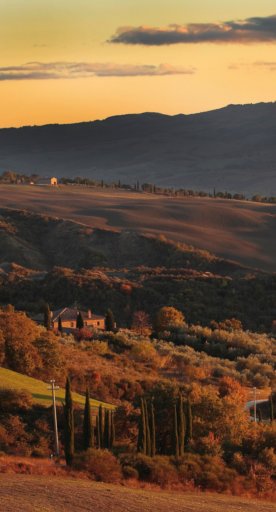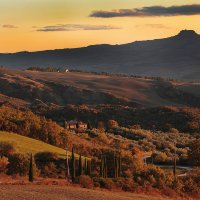

Discovering Dante's places on Monte Amiata
From San Salvatore to Santa Fiora, and Castell'Azzara up to Monte Labbro
A local legend says that the Amiata inspired Dante Alighieri for the mountain featured in Purgatory of the Divine Comedy. We don't know if the legend is true or not, but what's certain is that Tuscany's ancient volcano is present in numerous passages of the work by the Supreme Poet.
-
1.The Sasso di Dante in Abbadia San Salvatore
-
2.Santa Fiora, example of a Ghibelline fief
-
3.The Aldobrandeschi and Castell’Azzara
-
4.David Lazzaretti and the Veltro of the Divine Comedy
The Sasso di Dante in Abbadia San Salvatore
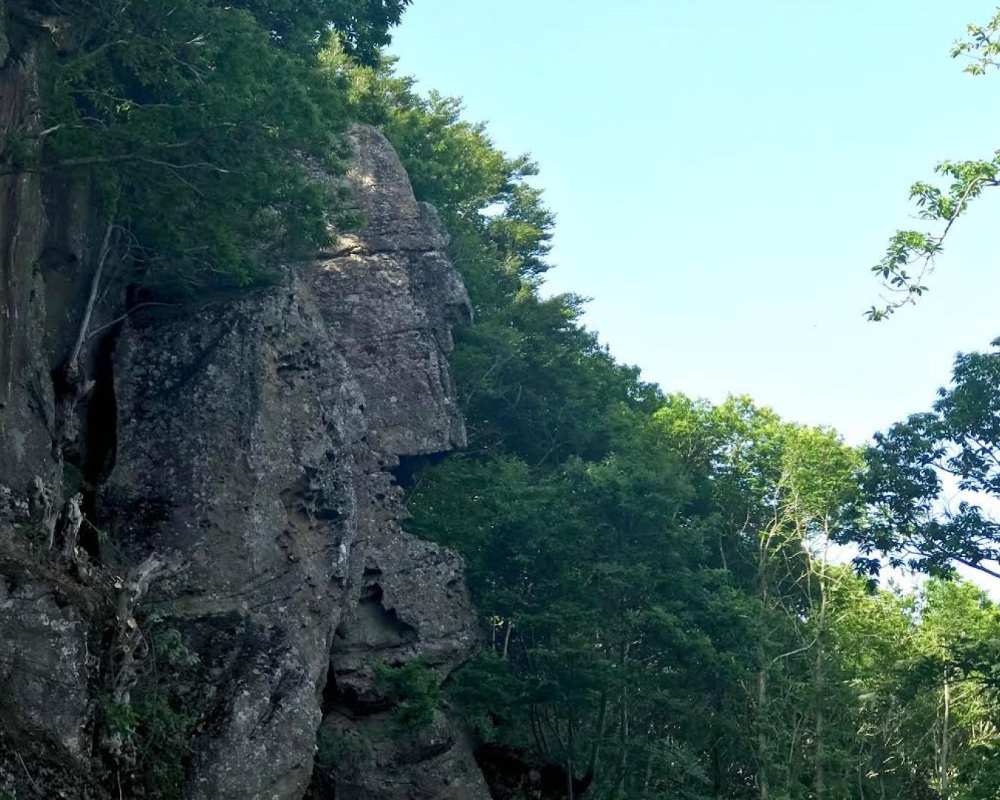
“To rush my ship now over better waves,
of my alive again mind that hoists sail and leaves,
behind its small keel the gulf that proved so cruel;
And now I'll sing about that second realm
where human spirits purge themselves from stain,
becoming worthy to ascend to Heaven."
(Purgatory, I, v. 1-6)
Along the road that climbs from Abbadia San Salvatore to the summit of Monte Amiata, there's a rock that stands out above all the others, immersed in a lush beech forest: it's the Sasso di Dante, a rock of igneous origin on which the profile of Dante Alighieri can unmistakeably be made out.
Legend has it that the rock formed spontaneously as a thank you to the Divine Poet, who was inspired by the Amiata to create the mountain of Purgatory.
Today, the Sasso di Dante is a destination for hikers and climbers: from its peak you can enjoy a spectacular view of the Sienese side of Monte Amiata.
Santa Fiora, example of a Ghibelline fief
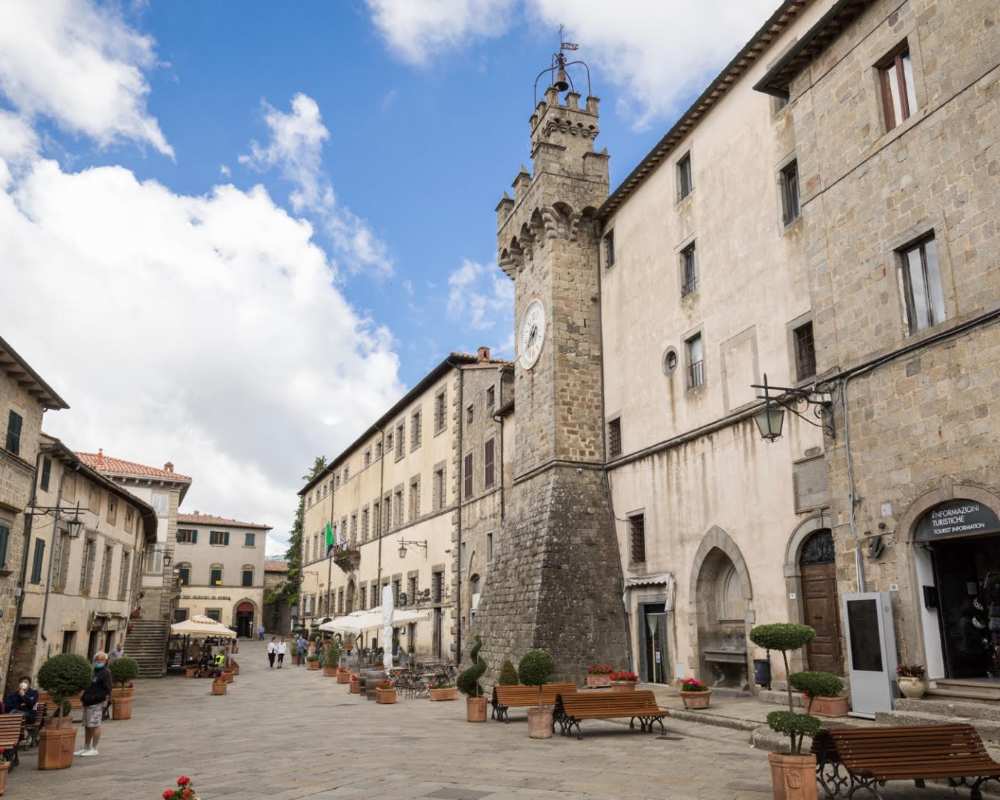
“Come, cruel man, and see the deep distress
of all your nobles. Cure them of their warts
and you'll see how Santa Fiora is darkened"
(Purgatory, VI, v. 111)
The village of Santa Fiora is mentioned in Canto 6 of the Purgatory in the Divine Comedy. Dante refers to the city as an example of the now decadent Ghibelline power, represented by the Aldobrandeschi family who were lords in the area.
Today, Santa Fiora is a lovely village in Monte Amiata, packed with attractions and activities. The quote is remembered in the central piazze with a rectangular plaque that welcomes visitors with Dante's verse.
The Aldobrandeschi and Castell’Azzara
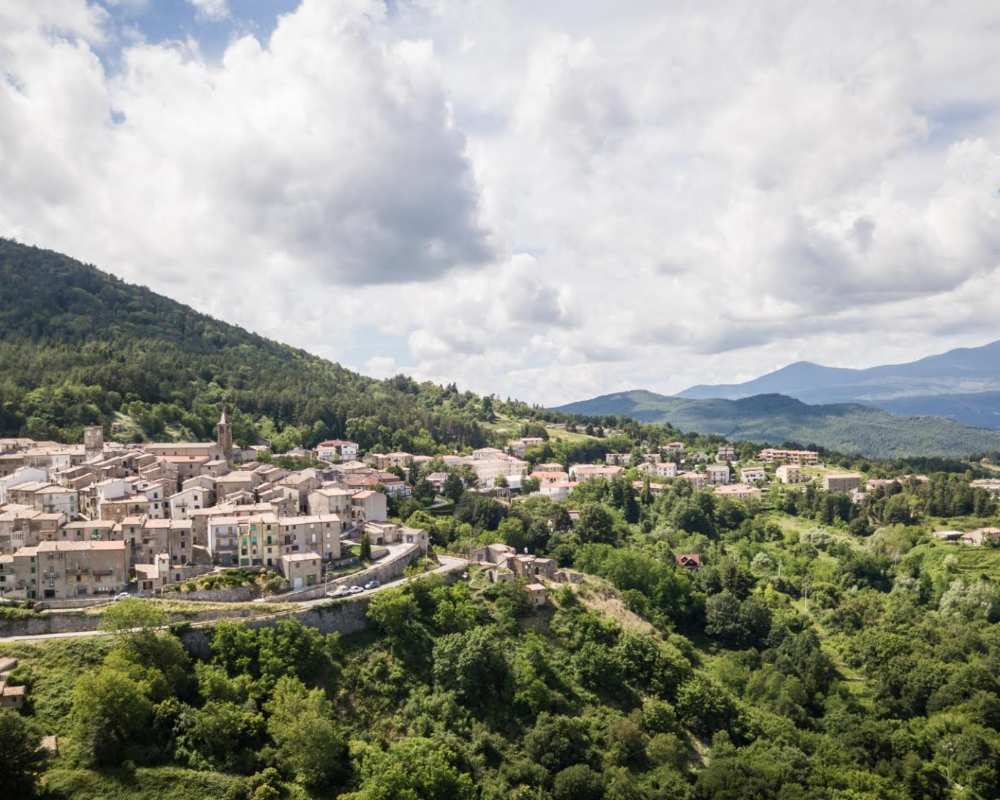
"When punters separate from some gambling game,
the loser stays behind full of misery,
to check the throws once more and sadly learn,
while all the rest go off with the winner.
Some buttonhole the man, some pluck his tails,
and some his sleeve - 'Just think of me,' they mean"
(Purgatory, Canto VI)
Canto 6 of Purgatory from the Divine Comedy also refers to the Aldobrandeschi family and their relationship with Amiata. The reference here is to the game of zara, a historic game of chance played with dice that was very popular in the Middle Ages.
Tradition has it that the Amiata village of Castell’Azzara was formed following a dispute between the Aldobrandeschi brothers, Bonifacio, Ildebrando, and Guglielmo, that was resolved by a game of zara.
Bonificio won, and then built the castle around which the current village of Castell’Azzara was created.
David Lazzaretti and the Veltro of the Divine Comedy
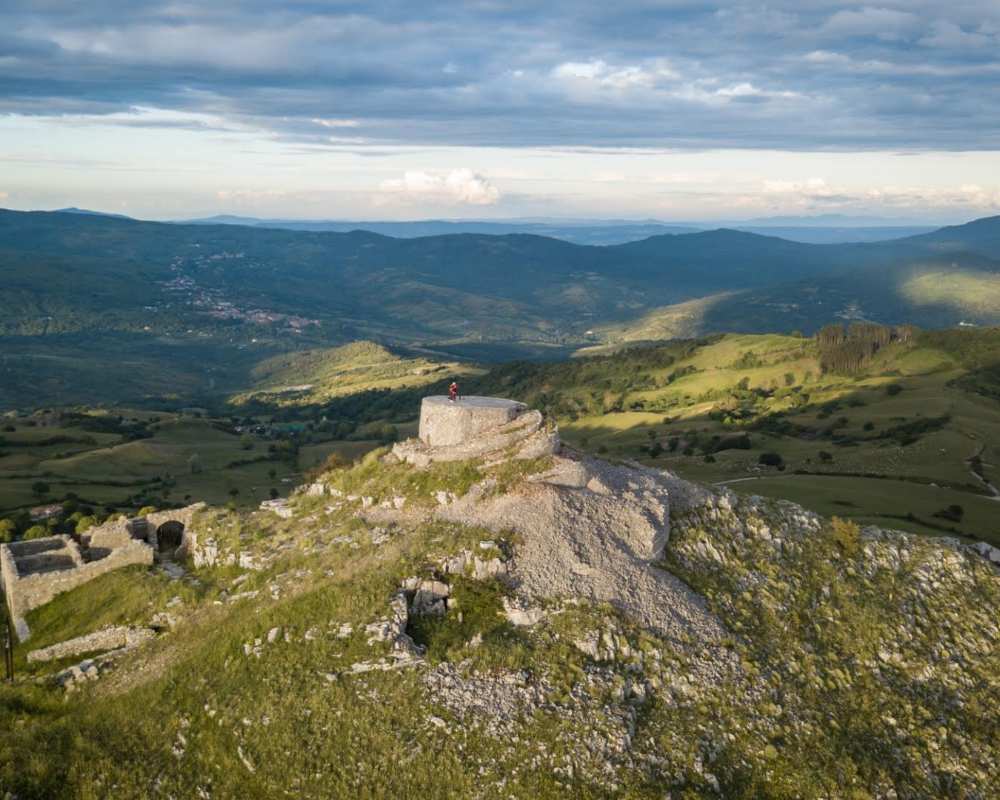
"Many are the creatures she marries,
and will so with more, till at last there comes
the hunting hound that deals her death and grief."
(Inferno I, v. 102)
The passage referring to the veltro (hunting dog) is one of the most famous passages of the Divine Comedy.
There are many interpretations related to this figure: from a saviour of humanity, to Pope Boniface VIII, to the emperor Arrigo VIII. However, according to some, the prophecy of the veltro was realized in the figure of David Lazzaretti, the Amiata preacher and founder of the giurisdavidica Church.
Lazzaretti was born in Arcidosso in the 19th century. On Monte Labbro, he founded the Giurisdavidica community, before being killed during a religious event.
Given his vision and his tragic end, he was called the Christ of Amiata. For this reason, many followers have identified him as the veltro of the Divine Comedy, the saviour of humanity.
The remains of the hermitage and the chapel of David Lazzaretti are still visible today on Monte Labbro.

